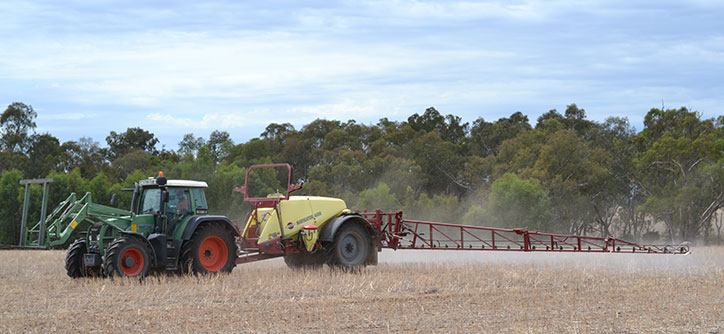“Compatibility” generally refers to the physical (formulation) and/or chemical compatibility of two or more products in a solution. For spray applicators we also need to consider biological compatibility, as we definitely don’t want to cause any harm to non-targets plants or crop damage and/or yield loss.
The best advice is to always read the label compatibility section under General Instructions, and if two (or more) actives (or products) are listed as compatible, and are registered for your desired use (or covered by a Minor Use permit) then put them into the tank in the specified order and happy days. Well happy days if the timing is right, water ph, salinity and hardness optimal for the chemistry, weather conditions suitable and the spray application process well refined with properly calibrated equipment, and the targeted weeds are not resistant or tolerant to your chosen actives. Quite a list, but let’s focus on pesticide interactions and other tank mixing issues.
Physical incompatibilities between formulations can occur between emulsifiables (EC’s) and flowables (DF) or wettable powders (WP) as the solvents and/or emulsifier in the EC can limit dispersion of the active in the flowable causing it to settle out, as seen in some simazine and trifluralin combinations ( often as a DF and EC respectively). Tank mixing with fertilizers is fraught with risk due to their strong electrochemical nature, and a good example of chemical incompatibility is 2,4D amine with copper sulphate, with at the least impaired efficacy or at worst a tank full of gel.
Once you have determined compatibility via the label, or manufacturer for mixes not specified on label or a jar test, remember to never let chemical concentrates come into contact with each other through mixing gear or in amongst low water volumes in the tank.
Pesticide manufacturers/distributors will have a tank mixing order recommendation for their products range as well as inpidual product mixing advice on label, but as a general guide follow this sequence:
1. Water conditioning agents (if required – e.g. LI 700, Liase® or Primabuff®).
2. Water dispersible granules (WG) /dry flowable products (DF) (water-soluble bags first).
3. Wettable powders (WP).Require constant agitation
4. Flowables (F) or suspension concentrates (e.g. atrazine-simazine liquids).
5. Emulsifiable concentrates (EC) (e.g. Trifluralin, Topik®, Kamba®, Bromoxynil).
6. Water-soluble concentrates (S) (e.g. glyphosate, Amicide® Advance 700, Spray.Seed® 250, Gramoxone® 250).
7. Surfactants and oils (e.g. BS1000, Hasten™, DC Trate®).
8. Soluble fertilisers.
Source: www.industry.nsw.gov.au – Weed control in winter crops 2014




